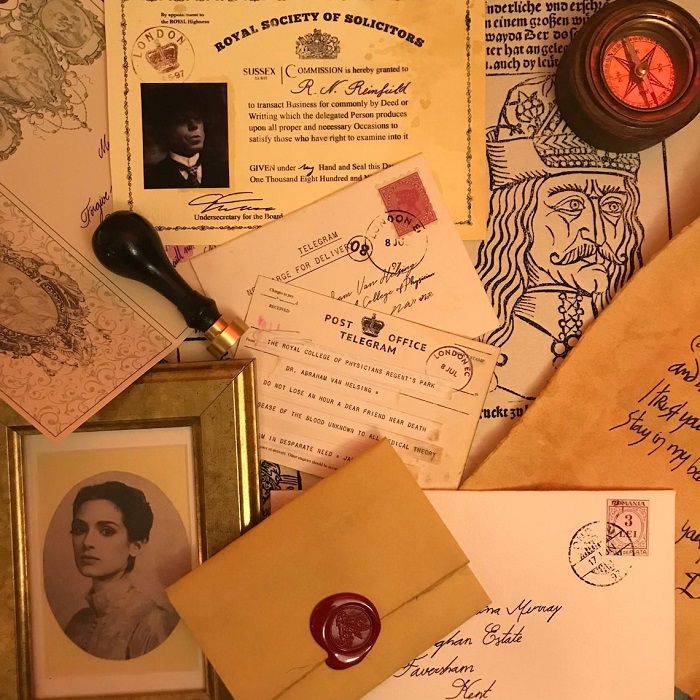
In ENGL 801 “Graduate Studies in English,” a required course for incoming M.A. students, we have always asked our graduate students to develop an original contribution to a current scholarly conversation about a literary or cultural text.
Starting in 2020, we added a final writing assignment: we asked our graduate students to create a piece of public scholarship (700-1,000 words), tailoring their academic paper and its scholarly intervention of 10-12 pages for a general-interest audience.
Students followed the guidelines shared by Irene Dumitrescu in her essay “What Academics Misunderstand about ‘Public Writing’”: “you should follow Horace’s advice for poetry: Aim to instruct or delight – ideally, to do both. Tell your readers a story, and give them the basic information they need to take it in. Avoid jargon for the most part, but teach your readers a key term when it will help them understand your topic better.”
Based on the initial success of this assignment, we’ve continued it in Fall 2021 and Fall 2022 — and now in Fall 2023.
During the next weeks, we’ll be featuring here the pieces of public writing from Section A (taught by Cameron Leader-Picone) and Section ZA (taught by me) selected for publication following anonymous review by three faculty members. Today, we start with “Mina Harker is More Than Just a Love Interest” by Destiny Munns (MA ’25) from Section ZA. Enjoy!
— Karin Westman, Professor and Department Head / Instructor for ENGL 801 ZA (Fall 2023)
It’s a cliché, but it’s true: the book is just better.
When looking at the depiction of female agency and control in media, you might expect a film made in the 1990s to give its female characters a bit more independence than its novel predecessor written 100 years prior; however, that’s not the case for Francis Ford Coppola’s 1992 adaptation of Bram Stoker’s Dracula.
Don’t get me wrong, Coppola’s adaptation is visually stunning and fairly faithful to its source material. It is even one of the few adaptations to include the fan-favorite American cowboy in England, Quincey Morris. But the film’s portrayal of its main female characters, Mina Harker and Lucy Westenra, leaves much to be desired.
Bram Stoker’s 1897 novel Dracula has much in common with Coppola’s adaptation. Both works follow Jonathan Harker’s captivity in Dracula’s home in Transylvania, Dracula’s trip to England and murder of Lucy, the centuries long romance between Mina and Dracula –
Wait, scratch that last part.
While Stoker’s novel is primarily a Gothic fiction novel, Coppola’s film is, first and foremost, a romance – and it’s a romance between the titular character Dracula and Jonathan Harker’s wife, Mina. While these characters have arguably no romantic scenes in Stoker’s original novel, Coppola’s adaptation introduces Mina as the reincarnation of Dracula’s centuries-dead wife, Elisabeta, for whom he has “crossed oceans of time to find” (Coppola).
Some audiences view Mina’s added backstory as a positive change, as it allows her a more active role in the events of latter half of the story and gives her a sexual autonomy and expression that she was denied in Stoker’s novel. Many critics are quick to point out the ways in which sexual violence is used a tool of controlling the women in Stoker’s Dracula. In an article regarding gender roles and narrative authority in Dracula, Alison Case compares Dracula’s attack of Mina halfway through the novel to a “pseudo-rape,” which sets to right her role as being submissive to the men around her. While the first half of the novel saw Mina as creator of plans in her group’s mission to defeat Dracula, this metaphorical sexual attack reinforces Victorian gender roles and depicts her as the damsel to be protected.
Coppola’s film addresses this plot point by portraying this scene as an explicitly sexual one and casting Mina as a willing participant in the act. In the film, sexual and romantic expression act as both Mina’s defiance of Victorian gender expectation, as well as a form of power. Not only does Mina utilize her sexual prowess to seduce and stun Van Helsing as he races to destroy Dracula’s castle, but her love for Dracula literally gives her the ability to summon storms to block the sun.
It can certainly be said that Mina is powerful in the film adaptation, but is the film’s portrayal more feminist? I don’t think so.
Stoker’s original novel Dracula is told to its readers through a series of letters, journal entries, telegrams, and newspaper articles. Readers are told from the beginning of the novel that these records have been organized in a specific manner and that “[all] needless matters have been eliminated” (Stoker 6). We later learn that most of the novel has in fact been organized by Mina, who has transcribed the others’ journals and chosen which articles are relevant to the story. Coppola’s film touches on this aspect of the narrative very briefly through voice-overs of some journal entries and letters, but the audience is never told of Mina’s role in collating these histories. This omission, I believe, is the greatest loss and failure of Coppola’s adaptation towards Mina’s character.
Through her collection and organization of the narrative in Stoker’s Dracula, Mina is given a voice. In Coppola’s film, it’s unclear how much of Mina’s identity is her own and how much is Elisabeta. In a famous scene from the film, Mina and Dracula drink absinthe together and she describes Dracula’s home of Transylvania, a place that she herself has never visited. She explains her knowledge of the country as Dracula’s voice “like a voice in a dream [she] cannot place.” Mina’s voice, Mina’s desires, Mina’s identity all cease to exist as she becomes Dracula’s desires made flesh. Mina’s ending in Stoker’s novel is perhaps not the most radical and it certainly doesn’t involve her grabbing a kukri knife and cutting off Dracula’s head. She ends the novel exactly as one might expect from a 19th century woman: as a mother and wife. However, Stoker also tells the readers that one day, Mina and Jonathan’s son may read their journals and letters and “know what a brave and gallant woman his mother is” (402). While she may not have complete freedom in her actions in Stoker’s novel, she is in control of the way her story is told.
Works Cited
Bram Stoker’s Dracula. Directed by Francis Ford Coppola, Film, Columbia Pictures, 1992.
Case, Alison. “Tasting the Original Apple: Gender and the Struggle for Narrative Authority in Dracula.” Narrative, vol. 1, 1993, pp. 223–43. JSTOR, http://www.jstor.org/stable/20107013.
Stoker, Bram. Dracula. 1897. Edited by Maurice Hindle, Penguin Classics, 2003.
— Destiny Munns (MA ’25)

6 thoughts on “Mina Harker is More Than Just a Love Interest”